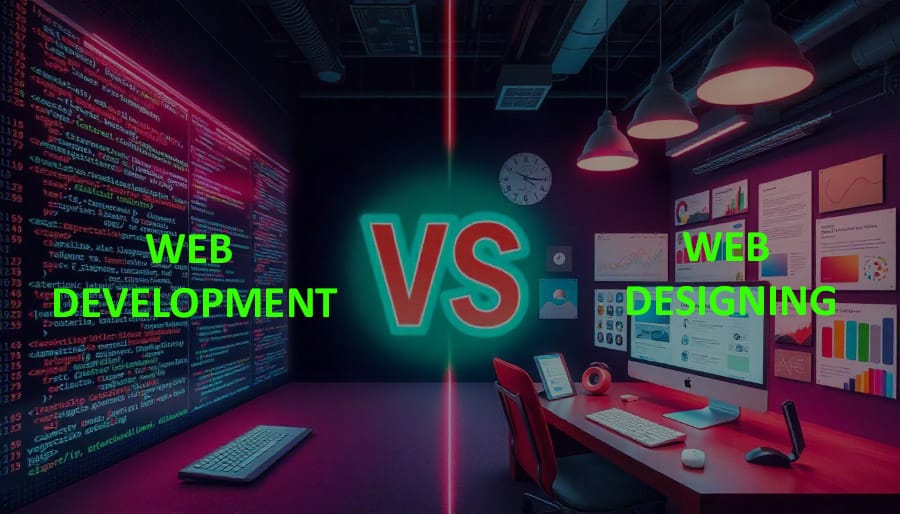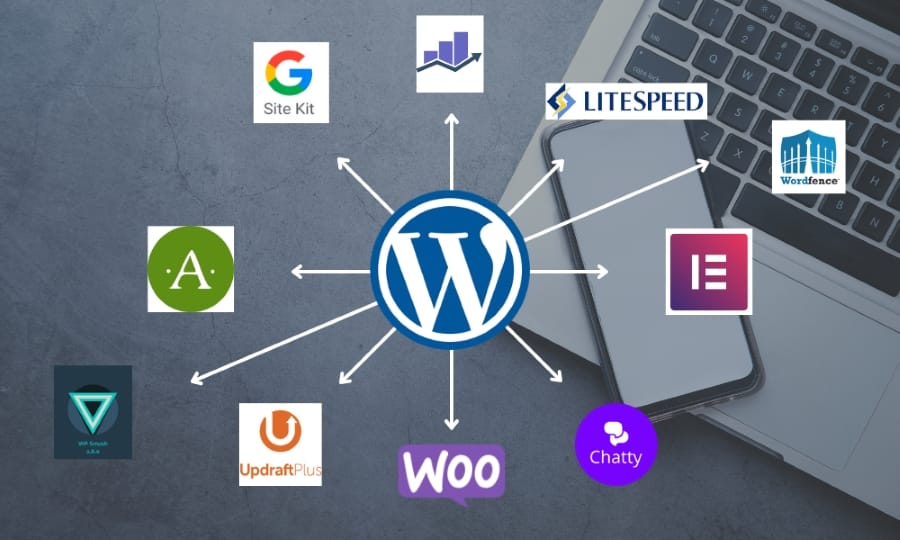Web Development vs. Web Design: What’s the Difference?
Businesses and creators need a compelling online presence in today’s digital landscape. Whether you’re a budding entrepreneur, a seasoned marketer, or a tech professional deciding on a career path, understanding web development vs. web design is crucial. This article dives deep into the roles, skills, and responsibilities that distinguish these two vital fields, helping you make informed decisions—hiring talent or choosing your career focus.
Creating a successful website involves much more than eye-catching graphics or clean coding. Two disciplines come into play: web development and web design. While these fields overlap, each has unique responsibilities and requires distinct skill sets. Understanding the difference can help you collaborate effectively with experts and even carve out your niche in the tech world.
What is Web Development?
Web development is the backbone of any online platform. It focuses on building, maintaining, and updating the core functionality of a website. Here’s what you need to know:
- Core Responsibilities:
- Coding: Using programming languages like HTML, CSS, JavaScript, Python, PHP, or Ruby to build interactive features and ensure smooth performance.
- Functionality: Creating dynamic, responsive websites that work seamlessly across various devices and browsers.
- Back-End & Front-End:
- Front-End Development: Deals with the client side of a website, ensuring a seamless user interface (UI) through responsive design.
- Back-End Development: Involves server-side logic, databases, and integration of complex systems to support the front end.
- Performance Optimization: Enhancing website speed, security, and reliability.
Web developers turn design blueprints into functional, interactive websites by combining code, databases, and server technologies.
What is Web Design?
Web design, on the other hand, is an art form that focuses on aesthetics and user experience (UX). It is about crafting the visual layout and overall feel of a website. Key points include:
- Core Responsibilities:
- Visual Elements: Creating visually appealing graphics, layouts, and typography that capture the brand’s identity.
- User Experience: Designing intuitive interfaces that offer a seamless and enjoyable user journey.
- Tools & Software: Utilizing design software like Adobe Photoshop, Illustrator, Sketch, or Figma to create prototypes and mockups.
- Responsive & Adaptive Design: Ensuring the website looks and works great on desktops, tablets, and smartphones.
Web designers are the creative force behind a website’s look and feel, ensuring visitors have a positive first impression and an intuitive browsing experience.
Key Differences Between Web Development and Web Design
While both fields aim to create a cohesive website, their focus and methodologies differ significantly:
- Focus Area:
- Web Development: Concentrates on functionality, performance, and technical integration.
- Web Design: Centers on aesthetics, layout, and user interaction.
- Skill Sets:
- Developers: Proficient in programming languages, database management, and server-side operations.
- Designers: Skilled in graphic design, typography, color theory, and user interface (UI) design.
- Workflow:
- Web Developers: Work on coding, debugging, and ensuring the technical robustness of the site.
- Web Designers: Work on creating mockups, wireframes, and visual prototypes to enhance user engagement.
- Collaboration:
Both roles require close collaboration. A great website results from developers and designers working together to blend visual appeal with technical excellence.
Roles and Responsibilities
Web Developers
- Coding & Programming: Writing clean, efficient code.
- Integration: Connecting the website with databases, APIs, and third-party services.
- Testing & Debugging: Ensuring functionality across devices and platforms.
- Maintenance: Regularly updating the site and implementing security measures.
Web Designers
- Concept Development: Creating the overall visual theme and layout.
- Prototyping: Building mockups and wireframes to visualize the user interface.
- User Testing: Gathering feedback to improve the design and user experience.
- Brand Alignment: Ensuring the website reflects the brand’s values and aesthetic.
Essential Skills and Tools
For Web Development
- Languages: HTML, CSS, JavaScript, Python, PHP, Ruby, etc.
- Frameworks: React, Angular, Vue.js for front-end; Node.js, Django, Ruby on Rails for back-end.
- Version Control: Tools like Git for collaborative coding.
- Database Management: MySQL, PostgreSQL, MongoDB.
For Web Design
- Design Software: Adobe Photoshop, Illustrator, Sketch, Figma.
- Prototyping Tools: InVision, Adobe XD.
- UX/UI Principles: Understanding layout, color theory, typography, and user psychology.
- Responsive Design: Knowledge of creating designs that adapt to various screen sizes.
By mastering these skills and tools, professionals in both fields ensure that the end product is not only visually stunning but also functionally robust.
Collaboration and Workflow
Modern web projects thrive on the synergy between development and design. Here’s how they typically collaborate:
- Planning:
- Designers create initial concepts and wireframes.
- Developers provide feedback on feasibility and technical requirements.
- Designing:
- Designers finalize the visual layout and UX elements.
- Developers begin setting up the structural framework.
- Development:
- Developers build the website using the agreed design specifications.
- Designers ensure that the final product matches the creative vision.
- Testing & Feedback:
- Both teams collaborate on user testing and make necessary adjustments.
- Continuous iterations lead to a polished, user-friendly website.
Effective communication and mutual respect for each discipline are key to delivering a successful project.
Choosing a Career Path: Web Development vs. Web Design
Deciding between web development and web design depends on your interests, strengths, and career goals:
- If you love problem-solving and logic:
Web development might be the ideal path. It offers challenges related to coding, system architecture, and performance optimization. - If you have a flair for creativity and aesthetics:
Web design could be your calling. It allows you to express artistic vision while crafting engaging user experiences.
Career Outlook
- Web Developers:
In high demand businesses require robust, scalable websites. Opportunities span from front-end to full-stack development. - Web Designers:
Equally critical in ensuring user engagement and brand consistency. As UX/UI continues to evolve, designers are increasingly sought after.
Both fields offer rewarding career prospects, competitive salaries, and the opportunity to work in dynamic, innovative environments.
Final Thoughts
Understanding the difference between web development and web design is essential for anyone looking to navigate the digital world. While web development focuses on creating a functional, interactive platform through coding and technical expertise, web design is dedicated to crafting a visually engaging and user-friendly experience. Both disciplines are interdependent, and their collaboration leads to websites that not only look great but also perform exceptionally well.
Whether you’re deciding on a career path or building your online presence, having clarity on these roles will ensure you make informed, strategic decisions that align with your goals. Embrace the unique contributions of both fields, and you’ll be well on your way to creating digital experiences that resonate with users and rank high on search engines.
For more insights on digital trends and expert advice on tech careers, stay tuned to our blog!




